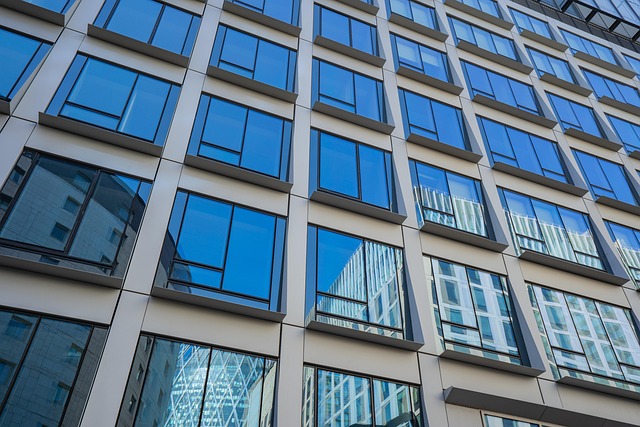Destratification fans are ceiling-mounted devices that combat thermal stratification—the natural rise of warm air in rooms—by redistributing and mixing warm air with cooler air below. They enhance HVAC efficiency, reduce energy consumption, and provide consistent temperatures in commercial or industrial spaces. These fans are ideal for large structures where temperature disparities exist, offering a sustainable solution for optimal climate control while cutting operational costs.
“Discover the revolutionary power of energy-efficient destratification fans in maintaining balanced room temperatures. This article explores these innovative devices, their role in temperature control, and the science behind ensuring every corner of a space is comfortably equalized. From understanding how they function to examining their diverse applications, you’ll uncover why destratification fans are transforming buildings into comfortable, efficient habitats. Explore the benefits and learn how these fans can significantly impact your environment.”
- Understanding Destratification Fans: Their Role in Temperature Control
- The Science Behind Even Room Temperatures: How Destratification Fans Work
- Benefits and Applications of Energy-Efficient Destratification Fans
Understanding Destratification Fans: Their Role in Temperature Control

Destratification fans play a crucial role in temperature control by addressing the issue of thermal stratification—the uneven distribution of warm air that naturally rises to the top of a room, while cooler air sinks to the bottom. This phenomenon can lead to hot and cold spots within the same space, impacting comfort and efficiency. By strategically placing these fans, typically ceiling mounted, they redistribute warm air throughout the room, mixing it evenly with cooler air from below.
This process not only enhances HVAC (Heating, Ventilation, and Air Conditioning) efficiency but also offers significant energy savings. Destratification fans utilize air mixing technology to ensure optimal thermal comfort, reducing the workload on other cooling systems. In commercial applications like offices or industrial settings, where large spaces require consistent temperatures, these fans are indispensable. They provide a cost-effective solution for achieving and maintaining balanced room temperatures without sacrificing air circulation.
The Science Behind Even Room Temperatures: How Destratification Fans Work

Maintaining even room temperatures is a complex challenge in many environments, from industrial settings to commercial spaces. This is largely due to thermal stratification, where warmer air rises to the ceiling while cooler air remains near the floor, creating an uneven temperature distribution. Destratification fans are designed to counteract this natural process through enhanced air circulation. By strategically moving warm air back down towards the floor, these fans break up the stratified layers of air and promote a more uniform temperature across the entire space.
Unlike traditional ceiling-mounted fans that primarily move air in a vertical plane, destratification fans employ air mixing technology to horizontally circulate air, ensuring efficient warm air redistribution. This not only enhances HVAC efficiency but also leads to significant energy savings. By reducing the workload on heating or cooling systems, destratification fans contribute to a more sustainable and cost-effective indoor environment. In commercial applications, this is particularly valuable, as it helps maintain optimal temperature control while minimizing operational costs.
Benefits and Applications of Energy-Efficient Destratification Fans

Energy-efficient destratification fans are transforming the way we maintain comfortable indoor environments, offering a host of benefits that extend beyond simple cooling. By addressing the issue of thermal stratification—where warm air tends to rise and cool air stays near the floor—these fans facilitate warm air redistribution, ensuring even temperature control throughout the space. This is particularly advantageous in larger buildings, where natural convection can lead to significant temperature variances between different levels.
Their application is vast, encompassing both industrial cooling and commercial applications. In industrial settings, destratification fans help maintain optimal working conditions for employees while minimizing energy consumption. In commercial spaces like offices, retail stores, and hotels, they enhance HVAC efficiency by reducing the workload on central air conditioning systems, resulting in substantial energy savings. Ceiling-mounted fans are especially effective at promoting air circulation and air mixing technology, creating a more comfortable microclimate and improving overall interior air quality.
Energy-efficient destratification fans are a game-changer in maintaining balanced room temperatures. By understanding their science and benefits, we can see why they’re becoming an essential application in today’s world. These fans don’t just enhance comfort; they also contribute to environmental sustainability. Incorporating energy-efficient destratification fans into our spaces is a step towards a greener future where even temperature control is achievable without compromising on efficiency.
